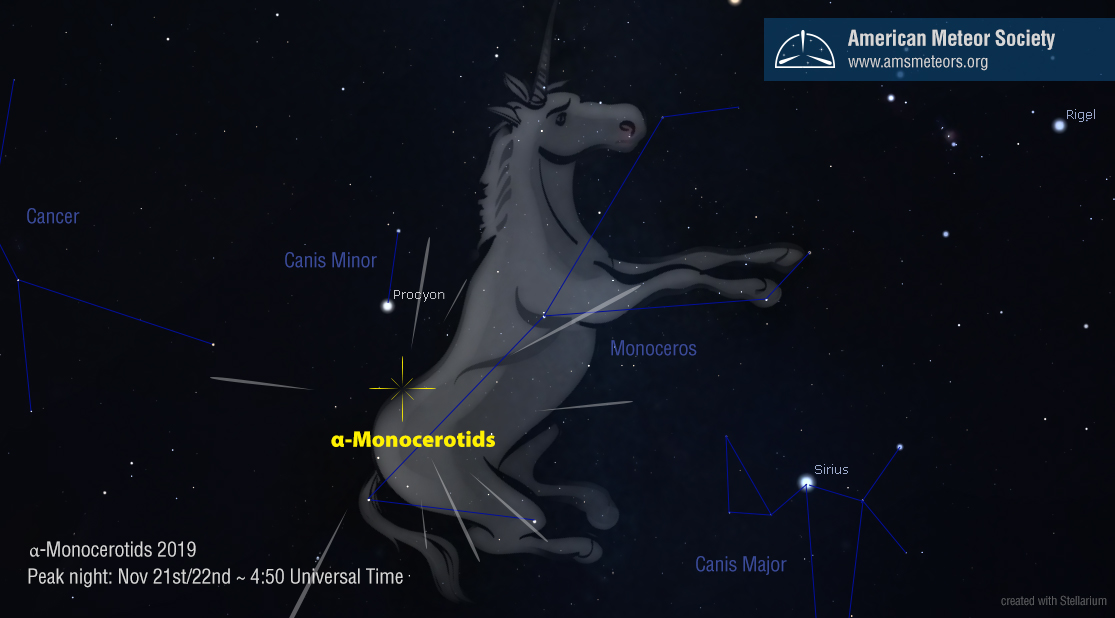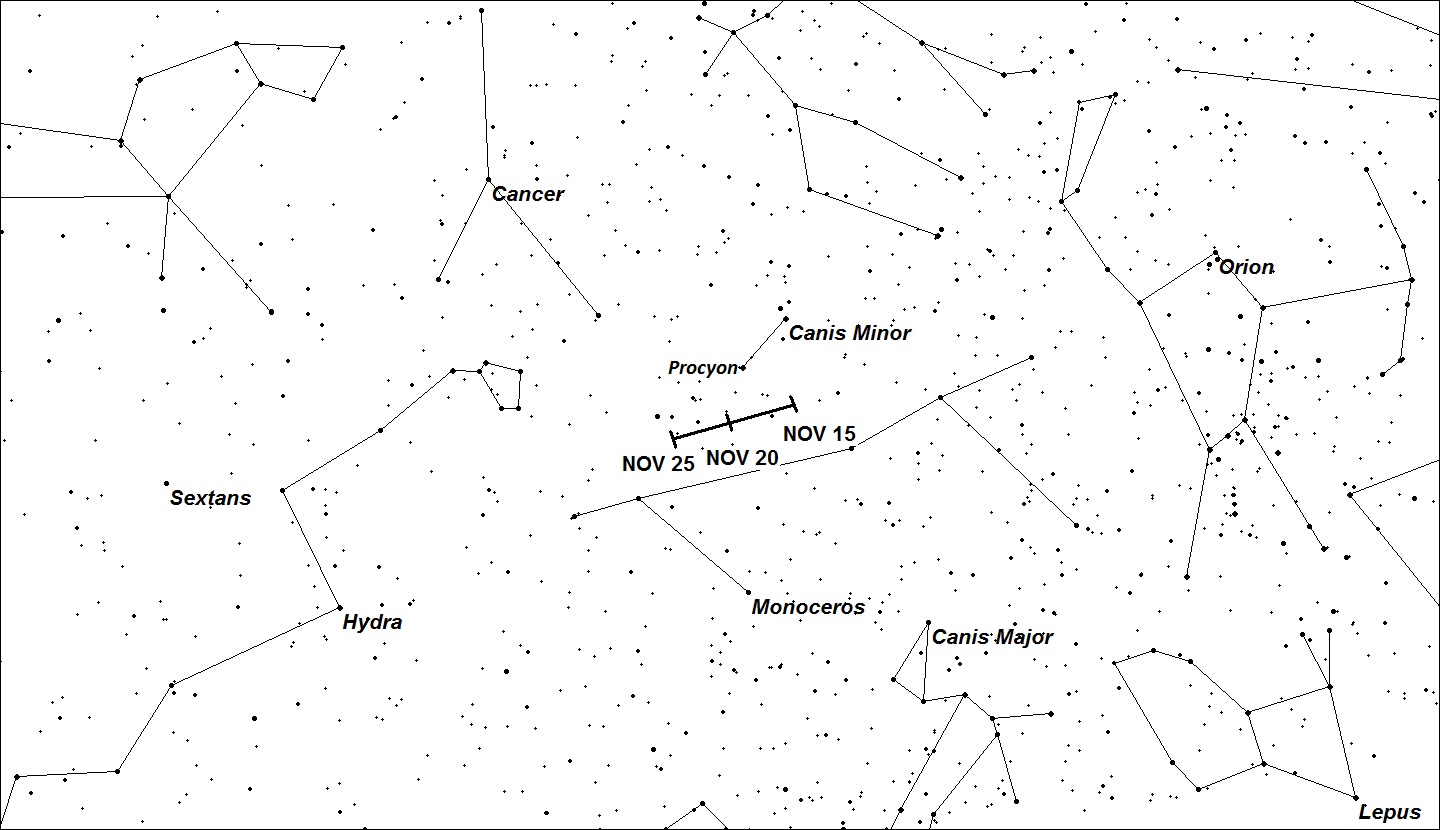Als deze komt, dan hebben West Europa en noord west Afrika de grootste kans om de meteoren te zien rond de klok van 05:00 uur onze tijd.
Alpha Monocerotid Outburst in 2019?

Well known meteor scientists Peter Jenniskens and Esko Lyytinen have predicted that there may be an outburst of the alpha Monocertoid meteor shower on the night of November 21/22, 2019. The alpha Monocerotids are active every year producing a few meteors around November 22nd. They are best known for four outbursts that occurred in 1925, 1935, 1985, and 1995. The activity in 1925, 1935 and 1985 were complete surprises but observers were ready for the 1995 event as it was predicted well in advance. This event was caught on video which help pinpoint the radiant which actually lies within the borders of the constellation known as Canis Minor, near the bright star Procyon (alpha Canis Minoris). This area of the sky rises between 2100-2200 local standard time (LST) and stands highest above the horizon between 0300 and 0400 LST.
Unlike most meteor outbursts which last for several hours, strong activity from the alpha Monocertids is over within an hour and easily missed. The outburst is predicted to occur near 04:50 Universal Time therefore western Europe and northwestern Africa are the best locations to view this possible display. Luckily, the moon will not be a factor as it is only 20 percent illuminated and located in the constellation of Virgo. Observers in North America and the Atlantic region can also view this possible display. At the time of the predicted outburst, the radiant will lie near the horizon for observers located on the west coast of North America. From that location only a few long earthgrazers may be seen shooting upward from the eastern horizon. As you move eastward conditions improve with the radiant lying approximately 30 degrees high from the east coast of North America.

Location of the alpha Monocerotid radiant. Courtesy Southern Star Systems
During the last outburst in 1995, the maximum zenith HOURLY rate was estimated at 400. The actual number seen was less in most locations as the radiant was located lower in the sky and viewing conditions were less than optimum limiting magnitude of +6.50. This figure is also misleading as it estimates the activity at only the time of maximum and not an entire hour. If this figure were to be reached again in 2019, it would mean that the strongest rate would be near 7 meteors per minute at the moment of maximum activity. Periods only 5 minutes from the time of the outburst could see considerably less activity. These meteors are never spaced evenly but appear in bunches so 2-3 meteors may be seen seconds apart and then an entire minute could go by without any activity. This is still far and away extraordinary activity and should be monitored. Potential observers are encouraged start viewing the sky at least an hour before the predicted time of maximum activity in case the timing estimates are in error. Do not stand and observe, rather use a comfortable lounge chair with plenty of blankets to keep warm. It would be best to face toward the star Procyon so that you can differentiate meteors from the alpha Monocerotids verses other sources. There will be 5-10 random meteors visible per hour while you try and witness any alpha Monocerotids. These random meteors will have all ranges of velocity and lengths. If you face toward Procyon then any alpha Monocerotids seen near this bright star will be short and slow. Those seen further away will be swift and longer but they will all trace backwards toward Procyon. If the moon is above the horizon from your location then move your view more toward the west to keep it out of your field of view.
During possible outbursts such as this it is important that the observer record the time and type of meteor seen. This allows us to determine the exact time of maximum activity. Observers are also encouraged to list the brightness (magnitude) of each meteor. Other parameters that can be recorded are color, velocity, and persistent trains. Observers are encouraged to contribute your data to the IMO by filling out an online observing form as soon as possible after your session has ended. Observing forms are located at: Visual Observing Form
Please remember that this is a prediction and not a certain event. Potential observers may witness nothing at all but their negative observations will still contribute to our understanding of meteor activity and help us accurately inform the public of other upcoming events.
References:
Jenniskens P. and Lyytinen E. (2019a). Alpha Monocerotids 2019. CBET 4692. D. W. E. Green (editor), IAU, Central Bureau for Electronic Telegrams.
Bron: amsmeteors.org

 Komt er in de nacht van 21/22 november een Monocerotid meteorenregen of niet?
Komt er in de nacht van 21/22 november een Monocerotid meteorenregen of niet?




